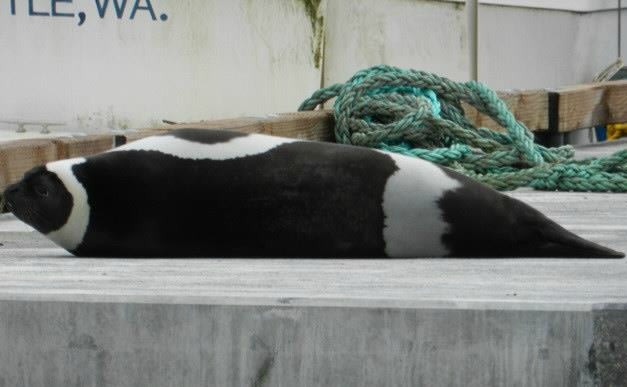By MARY FOSTER, Associated PressGROSSE TETE, La. -- Leonard Foster peered into the cage holding the 550-pound tiger at the Tiger Truck Stop in Louisiana and snapped one photo after another in awe.
"He's so big. He's wonderful," exclaimed Foster, a 47-year-old trucker from Atlanta.
Foster might just be lucky to see the tiger when he did. If a state district judge's ruling stands, this tiger named Tony may not be at the truck stop much longer. And gone will be one of the biggest curiosities for truckers and motorists coming off a nearby interstate into the south Louisiana community of Grosse Tete.
Judge Mike Caldwell ruled Wednesday in favor of a motion by the Animal Legal Defense Fund to force the Louisiana Department of Wildlife and Fisheries to revoke the permit that allows Tiger Truck Stop Inc. and its owner, Michael Sandlin, to keep the tiger at the business.
For years, the Siberian-Bengal mix has been a draw for gawking motorists who patronize this truck stop, buying food, gassing up and sticking around to get a picture with Tony. Since he was 11 weeks old, Tony has been at the truck stop, bottle fed as a cub.
Sandlin and the truck stop company argue that moving the tiger now would be cruel.
But Caldwell disagreed. His ruling also would bar Wildlife and Fisheries from issuing a new permit to keep Tony at the stop. He ruled that the agency failed to abide by its own rules in issuing the permit, rules that state tigers must be owned by an individual. The corporation that owns the truck stop is listed as the tiger's owner.
Caldwell had issued a similar ruling in May. But in August, an appeals court ruled Caldwell had to hold another hearing to collect input from Tiger Truck Stop Inc. and Sandlin.
Sandlin's attorney, Steve LeBlanc, pointed out in court that seven other tigers beside Tony have been kept at the truck stop in the past 22 years and none ever escaped.
The truck stop is neatly kept, flowers blooming outside, on a quiet road away from the interstate. The cage has a grassy area, a large water tank for Tony to swim in, hanging tire and other toys - even shade and an air-conditioned den.
The Animal Legal Defense Fund contends it's dangerous holding a big tiger at a business. It recalled last month's episode when an owner of exotic wildlife in Ohio released wild animals before taking his life.
"Louisiana has a law designed to protect people from animals like this," said Lisa Franzetta, a defense fund spokeswoman.
Wildlife and Fisheries has rules requiring the owner of such an animal to live on the premises. But Sandlin's home is about five miles away, even though an employee lives at the stop and the business is staffed around the clock every day of the year.
Sandlin said all employees have taken the state hunter safety course, there's a written plan to handle an escape and a "kill gun" and a tranquilizer gun are kept at the stop.
The 3,600-square-foot cage is surrounded by a 10-foot chain link fence topped with barbed wire, set back several feet.
"I've seen the exhibit and I think the tiger is safe from the public and the public is safe from him," said Rick Dietz, general curator at Audubon Zoo in New Orleans. "That does not rule out operator error, but that could happen anywhere."
But on this sunny afternoon, the tiger paced languidly and none watching cited safety concerns.
One man ate fried chicken nearby. Another sought a picture of himself and the tiger behind him.
"I don't worry about it being unsafe," said Ricky Arnold, a local who brought his 3-year-old son. "He's got that big old cage and nothing has happened all these years."
The defense fund has argued the enclosure is substandard and the arrangement unsuitable.
"It's just common sense that a tiger doesn't belong in a truck stop," Franzetta said.
Sandlin notes the pen and the tiger are inspected annually by the U.S. Department of Agriculture.
Neither he nor Wildlife and Fisheries have decided if they will appeal Wednesday's ruling. Sandlin said he was more inclined to sue authorities to force them to issue another permit.
"I've done everything they ever told me to do," he said, tears brimming in his eyes. "There is no reason to say I can't keep my tiger. He is my pet, not just an advertising gimmick."
http://www.huffingtonpost.com/2011/11/03/truck-stop-tiger_n_1073640.html?ref=weird-news


